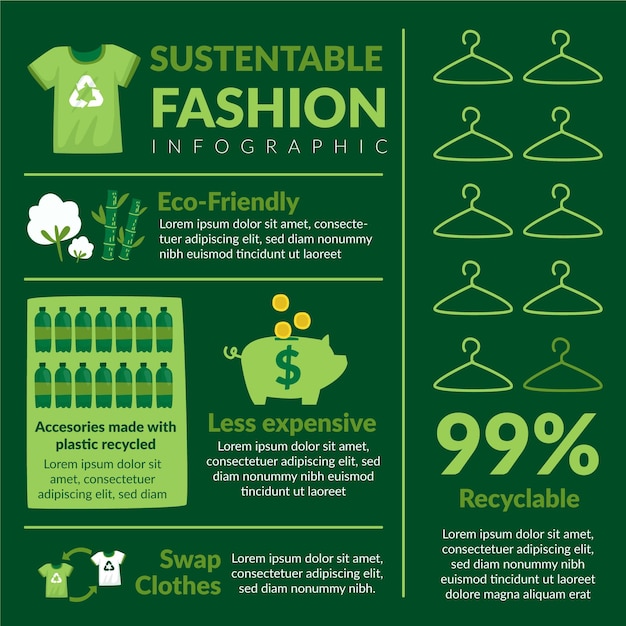Sustaining Regional Cape Town Sustainable Fashion for a Greener Future
Sustaining Regional Cape Town Sustainable Fashion for a Greener Future
Blog Article
Keep Ahead of the Contour by Checking Out Ingenious Fashion Trends
In a market as dynamic as style, remaining in advance includes greater than just following current patterns-- it demands an exploration of innovation. Smart textiles, for example, are transforming garments into useful masterpieces, while 3D printing is changing design processes with its adjustable, waste-reducing capabilities. As sustainability becomes a foundation, technologies like environmentally friendly products and round style techniques are reshaping ecological duty - Cape Town Sustainable Fashion. Additionally, the convergence of innovation and fashion advertises a brand-new age of consumer engagement. Just how, then, can these arising fads redefine the future of fashion, and what effects do they hold for brands seeking to prosper in this developing landscape?

Accepting Smart Textiles
In the last few years, the style sector has actually witnessed a transformative change with the combination of smart fabrics, a cutting-edge development that mixes modern technology with textile. This advancement represents not just a combination of appearances and capability yet likewise a considerable leap towards sustainability and customization in vogue. Smart fabrics, likewise understood as e-textiles, embed innovative electronic devices such as sensing units and conductive threads within the fabric, enabling garments to interact with the environment or the user.
These fabrics are made to keep an eye on physical specifications, such as heart rate or body temperature, giving real-time wellness analytics. Beyond wellness applications, clever textiles are also being used for flexible apparel, which can alter shade or pattern in feedback to environmental stimuli, hence providing a vibrant style experience.
Additionally, the development of energy-harvesting fabrics that produce power from motion or sunlight is leading the means for self-sufficient wearable modern technology. This technology is interesting environmentally aware consumers and designers aiming to decrease the eco-friendly impact of fashion. As r & d in this area breakthrough, clever fabrics are anticipated to end up being increasingly widespread, improving the landscape of modern-day fashion with their multifunctional abilities.
The Surge of 3D Printing
Transforming the manufacturing landscape, 3D printing has actually become a game-changer in the style industry. This innovative technology has actually allowed developers to push the borders of imagination, creating detailed and personalized garments that were formerly unthinkable. By leveraging electronic design and additive production, 3D printing facilitates the production of intricate geometries and patterns, allowing developers to try out new appearances and structures.
A significant benefit of 3D printing in style is its ability to create on-demand, decreasing waste and decreasing inventory requirements. This performance not just maximizes production procedures yet additionally enables quick prototyping, enabling designers to bring their visions to life in a much shorter duration. Additionally, 3D printing sustains customization somewhat unrivaled by standard approaches, using unique styles and individualized fits customized to specific customer preferences.
The rise of 3D printing has also equalized style, making it accessible to emerging developers that can now produce high-grade items without considerable monetary investment in standard manufacturing facilities. As technology continues to advance, the apparel industry is positioned to harness the full capacity of 3D printing, checking out brand-new products and methods that will undoubtedly redefine how style is developed and created.
Sustainable Fashion Advancements
As the garment industry comes to grips with the pushing need for environmental duty, sustainable style technologies have actually emerged at the forefront of transformative change. The expanding awareness of environmental influence has actually sustained a shift in the direction of more eco-conscious techniques and materials. Developers and brand names are now focusing on sustainability, incorporating approaches that lessen waste and minimize carbon footprints.
One substantial growth is the increase of round fashion, which highlights recycling and upcycling to prolong the lifecycle of garments. This approach not only lowers waste however likewise urges consumers to embrace a more conscious method to apparel intake.
Another innovation hinges on the adoption of ingenious dyeing methods that make use of waterless processes or natural dyes, consequently lowering the large quantities of water and chemicals generally made use of in textile dyeing. Moreover, improvements in biotechnology have actually brought about the creation of lab-grown leather and fabrics, offering eco pleasant and cruelty-free alternatives to traditional products. Via these pioneering initiatives, the garment industry is making purposeful strides in the direction of a more sustainable future.

Tech-Integrated Clothing
Tech-integrated apparel represents a cutting-edge blend of fashion and technology, improving exactly how people interact with their apparel. This ingenious domain is noted by the addition of smart fabrics and embedded electronic elements, boosting both functionality and visual charm. From health and fitness trackers installed in sports apparel to heated coats regulated via smart device apps, tech-integrated garments uses consumers unmatched convenience and flexibility.
Introducing brand names are driving this pattern, concentrating on producing garments that react to environmental stimulations or customer you can find out more commands. For circumstances, some garments can transform shade or pattern in action to temperature level changes, while others incorporate biometric sensors to monitor health metrics like heart price or stress and anxiety degrees. The smooth integration of technology into textiles also encompasses environmental sustainability, with efforts to create self-cleaning textiles or garments that adapt to climate condition, hence decreasing the requirement for several layers.
Furthermore, the introduction of wearable modern technology is not simply limited to clothing however encompasses devices like watches and eyeglasses, more broadening the range of tech-integrated fashion. As the sector remains to innovate, the capacity for customization and customization in clothing expands, using consumers one-of-a-kind, tech-enhanced site fashion experiences that deal with their private requirements and preferences.
Future of Virtual Style
Recently, the future of digital style has arised as a transformative force within the sector, leveraging advancements in digital modern technology to redefine exactly how style is created, experienced, and consumed. By incorporating augmented fact (AR), virtual truth (VIRTUAL REALITY), and 3D design devices, designers can currently craft interactive and immersive experiences that transcend typical fashion limits. Online style enables for the production of garments that exist entirely in digital settings, offering limitless opportunities for technology without the restrictions of physical manufacturing.
This digital shift not just provides opportunities for imaginative expression but additionally addresses sustainability problems inherent in standard style practices. Cape Town Sustainable Fashion. By getting rid of the need for physical resources, online style decreases waste and reduces carbon impacts. In addition, the rise of virtual style lines up with the raising consumer demand for distinct and customized experiences, as digital garments can be customized and customized to private choices effortlessly

Verdict
The style sector's future lies in the integration of innovative modern technologies and lasting practices. Digital style is poised to redefine consumer interactions.
In recent years, the style sector has seen a transformative change with the combination of clever fabrics, a cutting-edge development that blends technology with fabric.As the fashion market grapples with the pressing need for ecological duty, lasting style technologies have actually arised at the leading edge of transformative adjustment.In current years, the future of digital style has emerged as a transformative pressure within the sector, leveraging advancements in digital modern technology to redefine just how style is produced, experienced, and taken in. The rise of digital style straightens with the raising customer need for customized and distinct experiences, as virtual garments can be customized and customized to specific choices with simplicity.
The fashion industry's future lies in the assimilation of lasting methods and ingenious innovations.
Report this page